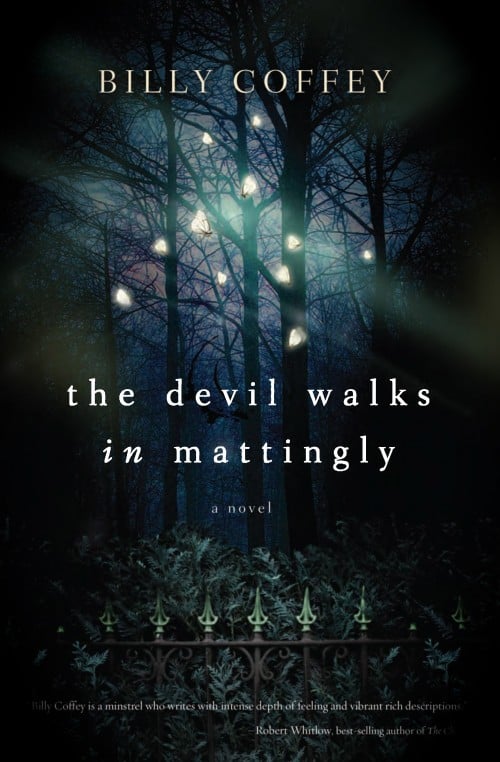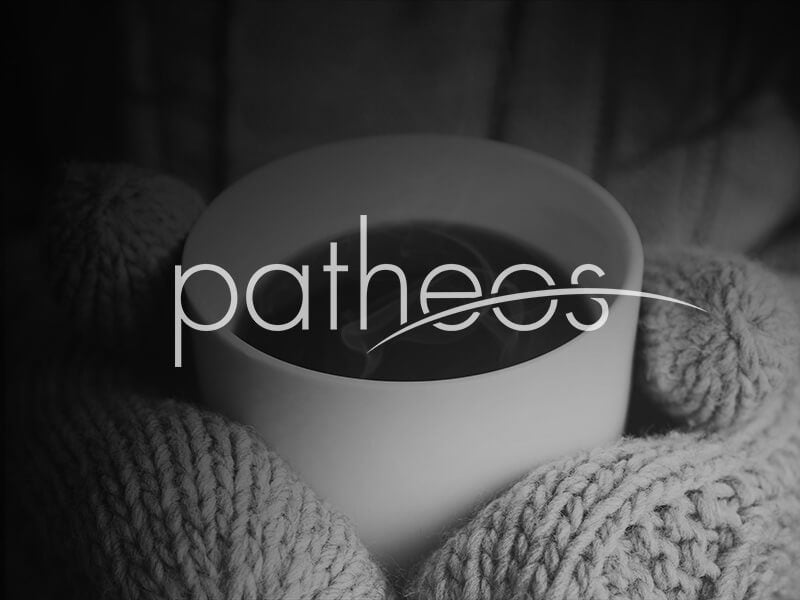

Racism is at the heart of Mississippi writer Tom Franklin’s “Crooked Letter, Crooked Letter”. Join author Karen Spears Zacharias as she talks with Tom Franklin about his latest bestseller.
Karen: How did the story of “Crooked Letter, Crooked Letter” first present itself to you?
Tom: Way, way back in 2003, when “Hell at the Breech” came out, my publisher bought my “next book,” which had no plot, title, anything. All I knew was, vaguely, I wanted to write about brothers. I struggled with it, two white brothers, one well-to-do, one on the down-and-outs, until I gave up and wrote “Smonk” in 2004ish. After that I came back to the other, as yet untitled novel I’d been unable to get off the ground. One day it would be about a small-town mechanic with no customers; the next it would be about a rural police officer. When a pal suggested I make the cop black, the idea really began to take off. The book at that time was set in Alabama (where I’m from), but then the title “Crooked Letter, Crooked Letter” occurred to me. I was shocked no one had used that title and slid the whole shebang west into Mississippi.
Karen: Larry Ott is that awkward kid who much to his mechanic father’s chagrin would rather spend time behind the cover of a Stephen King novel than under the hood a car. Wasn’t your father a mechanic? Did you intentionally write yourself into the character of Larry Ott?
Tom: I didn’t intentionally make Larry Ott autobiographical, but lord is he. Yep, his and my dad are mechanics, and Larry and I both loved Stephen King as kids (and as adults, too). But many of the events in Larry’s life are from my own: I had a couple of black friends I didn’t feel able to be out in the open with; my father, sister, brother and I gave several rides to a black woman and her daughter one cold, cold winter, and they smelled like woodsmoke, as Silas and Alice do; my first date happened much as Larry’s does, except my date didn’t disappear. Toward the end of the writing of the book, I was rather shocked at how much of my own past I’d used with Larry. I’d told that first date story dozens and dozens of times – being at the drive-in movie alone, putting a blanket over my hand as if it’s the head of my date – and had tried to write it as a comic story and even a funny essay. I finally made it fit in “Crooked Letter, Crooked Letter”, but it’s not funny here.
Karen: Larry befriends a kid named Silas Jones after Silas and his mama move onto property owned by Larry’s daddy. But because Silas is black and Larry’s white, the two boys have to keep their friendship hidden from their parents. Do you think the sort of racial tension you expose in this story still exists today?
Tom: Racial tension, of course, does still exist here in Mississippi and, I assume, in most other places. I hope that, generation by generation, we’re stamping it out, though. Several people I grew up with who were racists then aren’t now, and it’s simply because they grew up and decided how stupid racism really is; their fathers and mothers were of an earlier generation, where things were very different. My hope is that, generation after generation, we wipe it all out.
Karen: One of the things I love most about this book is the way you describe the sights, sounds and smells of the deep woods. Only a person who had spent time in the woods could capture all those details. But kids today are less likely to grow up as Larry and Silas did. They do their roaming at the local malls, not in the woods. Have you observed a disconnect from nature reflected in the writing of the students you teach at Ole Miss?
Tom: The outdoors is still there, and I think a lot of my Ole Miss students are still able to find it. I worry, though, that for a lot of other places, the outdoors, woods, is shrinking or isn’t available. But even the “outdoors” is evolving. When I wrote “Hell at the Breech,” I was told by local historians that the grown-up, wooded land where those events (that novel is based on history, events that occurred twelve miles from where I was born and lived until I was 18) happened in the 1890s had completely changed. The land then would have been cotton fields; now it was scrub pine, for lumbering.
Karen: Silas is the lawman tasked with tracking down the murderer of a young girl. Larry, the town outcast, is a primary suspect. That’s a twist on the Hollywood stereotype – having the black guy play the cop and the white guy as the main suspect in a murder. Was this intentional twist a political statement?
Tom: Honestly, little is “intentional” with me and writing. At least not at first. I made Silas black because a black friend of mine suggested I do so. His name’s David Wright, a wonderful writer himself, and he – I suppose – gave me permission, or allowed me to give myself permission, to make Silas a black man. I’d avoided writing about race relations my whole career (3 books), though not intentionally. I just hadn’t hit the right story.
And even writing the book, I couldn’t worry about race relations because that kind of thinking (What is my book “about”?) can freeze me. I just tried to write Silas as a man, not thinking of color so much. Later, when I had a draft done, David Wright read it for me and found a lot of things I got wrong, mostly nuances, but he was a great help to me, from the suggestion that got the book going to fixing its many wrong parts.
Karen: It takes some gumption in today’s volatile publishing market to do things that might offend somebody, yet, you don’t shy away from using the “N” word. How much did you wrestle with that word choice?
Tom: I wrestled every time I used “nigger.” It’s the worst word in English, in my opinion, and yet it’s used openly and aggressively among certain white people. Some of my characters are based on these people, and so not to use the word would make the book less real. I think some things are hard to look at, to hear, but worse than looking and hearing is not looking, not hearing. Or, better, not seeing, not listening. I got nailed in a couple of reviews for this, but then, back when “Hell at the Breech” came out, Laura Miller of the NY Times called it problematic that only the “bad” characters in that 1890s book used the “N-word.” She said I got it wrong. So you can’t please anybody. What I did not do is use the word gratuitously.
Karen: What did you love best about writing this story?
Tom: The thing I loved best was finishing. That sounds glib, but I don’t mean it to. I don’t enjoy writing as it’s such an act of faith, flipping around in the air with a trapeze that’ll maybe be there when your hands grab for it, wondering if the bar’s not there whether the net’ll be there when you land. I love having written far better than writing.
I did, though, enjoy certain aspects of writing. I liked the cop stuff, finding that out. I liked the chickens. They were fun. I loved writing the list of what happened to Wallace Stringfellow’s dogs.
Karen: Was there ever a time when you got stuck? A place where the pacing or tension wasn’t gelling for you? What did you do to rectify that?
Tom: My being stuck in the writing of this book occurred from 2003 to about 2008. Those first five years were when I didn’t know what the story was, just that I wanted to write about brothers. From there it took a long time to get it to where it is now. I honestly don’t feel in control of my writing; it comes from the same place dreams to, and just as I can’t control my dreams, I can’t control my writing. For me, it’s often a lot of waiting. Waiting for an image that kindles something deep in my sub- or unconscious mind, and suddenly I’ll be writing a bunch of shit I had no idea I knew or had ever thought of, characters act on their own and things happen that surprise me.
To rectify? I just have to keep trying. Let’s say I have a good day two days out of five. That’s a good ratio, though the three days nothing happened often feel wasteful and ill-spent. But if I hadn’t been there those days, who know what might’ve (or might not’ve) happened on those good days.
Karen: How do your novels take form? Do you fashion them from dirt or do you use a storyboard and/or outline?
Tom: My novels have all been different. With “Hell at the Breech” I wrote it in snitches and snatches, fits and starts. I’d go a year without writing much at all, a few pages. Then, in the last year, I wrote over 500 pp. What I wrote first wound up in the middle of the book. With “Smonk,” I wrote a super-fast draft (200 pp in ten days) and then spent a year and a half fixing it. With “Crooked Letter, Crooked Letter” I wandered for a few years, searching for the story, then wrote a first draft quickly, in Brazil, in about 6 months.
What I’ve learned is that what’s best for me is to get to the end asap, even if I know it’s a mess. Then I have a whole animal to look at, I can see what I have. And what needs to be done.
Karen: I spoke with author Ralph Eubanks, Director of publishing at Library of Congress and an Ole Miss alum, about your book. Eubanks said after he finished reading “Crooked Letter, Crooked Letter” he wrote you a note suggesting that the lyrical and haunting writing in this book has been influenced heavily by that lovely wife of yours, the poet Beth Ann Fennelly. What do you think? Is Beth Ann putting you in touch with your more poetic side?
Tom: Beth Ann is my first, best editor. She’s on every page, in one way or another. She’s good on big picture things (I had Larry be “creepy” early on, and she advised against that) as well as line edits. I’m so lucky to have her. Ralph is right.
Karen: What’s the most difficult thing about a marriage between two imaginative and creative forces? How do you overcome that?
Tom: Knock wood, Beth Ann and I work well together because we have each other’s best interest at heart. If my books do well, she says she can buy more shoes. We met nearly 20 years ago and have become so entwined now that it’s often hard to know where she ends and I begin. I’d have written entirely different things without her in my life. Same with her. We’re lucky in that we don’t compete with writing.
Karen: When did you get the calling to be a writer?
Tom: I got “the calling” early, but resisted. Computers seemed more practical. But you need math for those, which I didn’t/don’t have. It wasn’t until I started reading good lit, though, that I got really serious. I went to the MFA program at the University of Arkansas in 1994, age 31. So I was something of a late starter, though I’d been writing my whole life and working jobs that I’d use in my stories and novels.
Karen: You mention in the acknowledgements the passing of the beloved writers Barry Hannah and Jay Prefontaine. Can you tell us how these men influenced you?
Tom: Prefontaine was just a good friend. A good writer who never got to publish a book. Lung cancer too him before age 50.
Hannah showed me that a sentence isn’t just the flat dull rectangular brick you use to build with. He showed me that every brick could be its own perfect work of art, and that what you build with these perfect objects will itself be a more perfect piece.
Karen: The publishing business is facing one of the most unstable financial markets ever. We’ve just learned that Joseph-Beth has declared bankruptcy, which means that Nashville’s Davis-Kidd is shutting its doors. The move to digital books is no longer inevitable, it’s reality. I recall being at Ole Miss’s Conference on the Book several years ago when Jeff Kleinman prophesied the future that is upon us. What kind of adjustments are you making to adapt to the era of spineless books?
Tom: Spineless, to me, always meant cowardly. But I’m not saying electronic books are cowardly. Myself, I like books you can hold. But I can’t fight the future and “Crooked Letter, Crooked Letter” did well electronically. But I’ll always buy books.
Karen: Who are the writers you turn to when you want to get lost in story?
Tom: To get lost in story, Stephen King. Language, Cormac McCarthy. Humor, Jack Pendarvis.
Karen: What’s the biggest misconception people make about writers?
Tom: That we’re quick. Or smart. I’m neither, which is why I spend so much time alone, trying to say a right, clear thing.
Karen: What are you working on next?
Tom: Novel. In Mississippi. Flood of 1927
(Dear IRS: I received an advanced copy of Tom’s book. I sleep with it under my pillow.)












